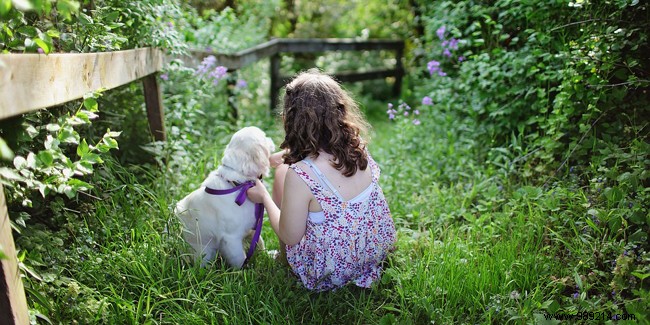
The advantages of adopting a pet for your child are well established. Whether it's a dog, a cat, a rabbit or a bird, animals help children grow better, take on responsibilities, gain self-confidence and socialize. , etc. But a pet is not chosen lightly. This is a long-term decision that needs to be carefully thought out beforehand. Our advice for choosing a pet for your child.
Before the age of 2, a child does not really become aware of the existence of a pet. If he perceives its presence, he identifies it more with a stuffed animal or a toy. Then, growing up, he has the ability to understand that he is not a toy but a living being, even if after 2 years his only occupation with him is entertainment and play. does not yet realize the needs (care, walks, food, etc.) of the pet present in the house. In addition, a small child does not yet understand that he can hurt him by playing with him, which involves risks as much for the animal as for the child.
It is from the moment a child walks and around the age of about 15 months that the presence of a pet in the house becomes interesting and is appreciated by the child. Very small, the dog, the cat, the rabbit or the hamster are companions that appeal to children. They still identify them with their plush, they like to stroke their fur and they really start to play with them. This is an age when the bond between the child and the pet takes on its full meaning.
Between the ages of 3 and 6, the child can begin to participate in the care of the animal by feeding it, brushing it, etc. A dwarf rabbit, a guinea pig or even a dog, provided it is not aggressive, are pets that it can easily take care of because they are easy to tame.
After 6 years and when he grows up, it is easier to choose a pet for his child because he is able to take care of it (with your help of course) and to take responsibility. It is also from the age of 6 that the animal takes a whole place, and even sometimes unique, in the life of the child who often considers it as his faithful friend, even his confidant. Dogs and cats are then more preferred to rabbits, rodents or birds by older children (see here for advice on dogs or for cats).
In addition to the age of your child, his character traits also count in the choice of a pet, especially when you plan to welcome a dog at home. Even if the education of the latter has a lot to do with his way of being, certain breeds of dogs are better suited than others to the personality of his child.
For an active child, for example, it is preferable to choose medium to large breeds of dogs that will better withstand the possible brutal gestures of the child. A dog that needs a lot of physical exercise like the Jack Russel Terrier, Dalmatian, Labrador, etc. will also suit your child better. Fish are also recommended for active children for their de-stressing properties. But the lack of interactivity with this pet often turns children away after a while.
Small dogs will be more to favor for a shy child. If he is fearful, a medium-sized dog will help reassure him and gain self-confidence.